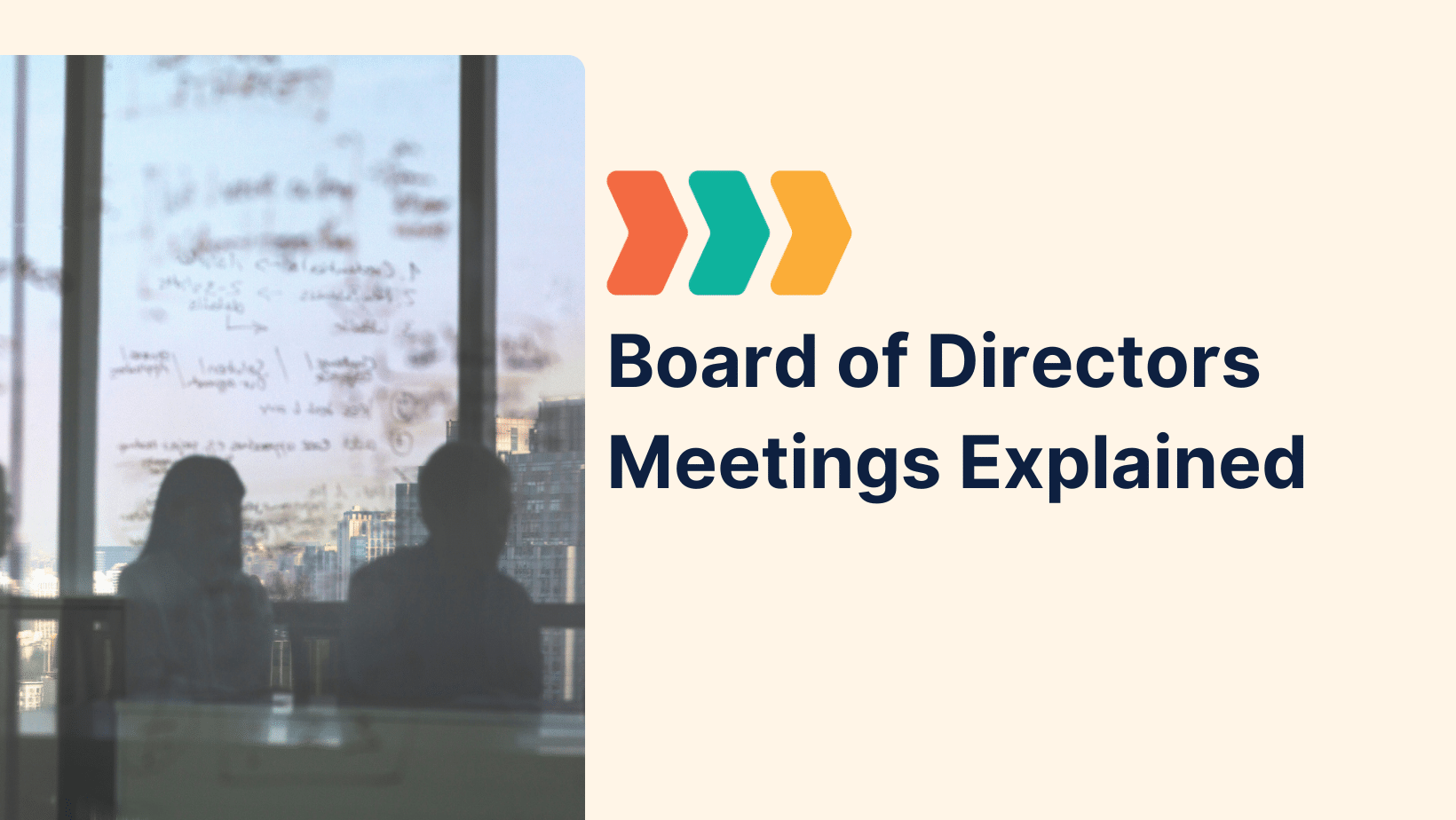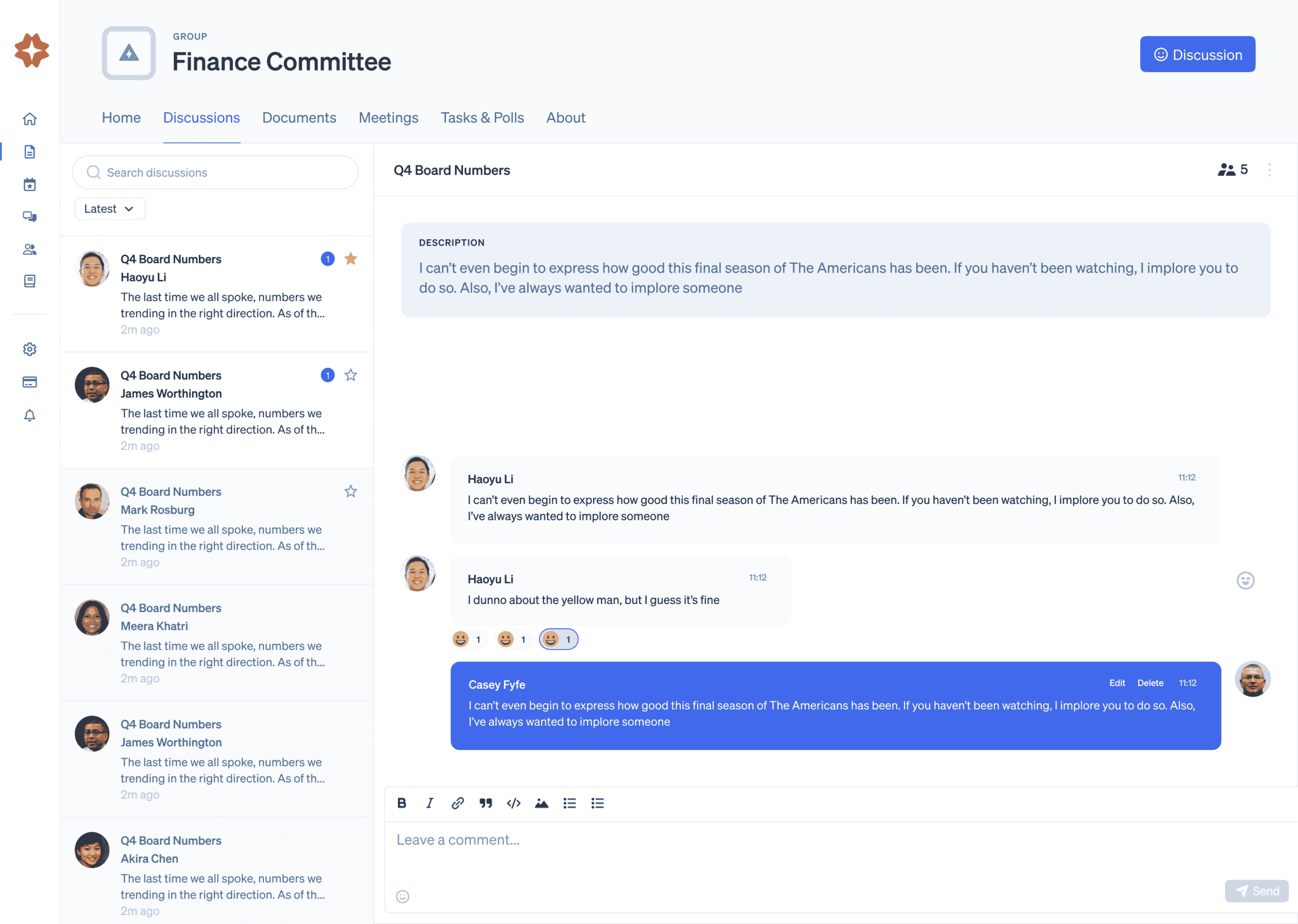In the corporate world, board of directors meetings represent the pinnacle of organizational governance. These crucial gatherings bring together the minds that steer an organization’s strategic direction and ensure its long-term success. Whether you’re a seasoned board chair or a newly appointed board member, understanding the mechanics and mastering the art of effective board meetings can transform your organization’s governance.
What is a Board of Directors Meeting?
A board of directors meeting is a formal assembly of elected or appointed individuals who collectively oversee the activities of a company or organization. These meetings serve as the primary forum where directors fulfill their fiduciary responsibilities, make critical decisions, and provide strategic guidance to executive leadership.
The board room is where vision meets accountability, where strategies are scrutinized, and where the interest of the company is placed above all individual concerns. These gatherings typically follow established rules of order to ensure efficient and productive discussions.
The Importance of Well-Structured Board Meetings
Effective board of directors meetings don’t happen by accident. They require careful planning, clear objectives, and disciplined execution. The quality of these meetings often reflects the overall health and functionality of an organization’s governance system.
Research shows that boards that spend time efficiently in meetings contribute significantly more value to their organizations. Yet, many directors report that their meeting time is not used optimally, highlighting a critical area for improvement in corporate governance.
Essential Components of a Board Meeting
1. Meeting Participants
The composition of attendees at a directors meeting typically includes:
- Board Chair: Leads the meeting and ensures productive discussion
- Board Members: Directors who participate in decision-making
- Independent Directors: Outside members who provide objective perspectives
- Company Executives: Often including the CEO, CFO, and other relevant leaders
- Recording Secretary: Documents meeting proceedings and decisions
The number of directors present must meet quorum requirements as specified in the organzation’s bylaws to make binding decisions.
2. Meeting Structure
A well-structured board meeting follows a predetermined agenda that typically includes:
- Call to Order: The board chair formally opens the meeting
- Approval of Previous Minutes: Confirmation of past meeting documentation
- Committee Reports: Updates from standing committees
- Financial Review: Assessment of the organization’s financial health
- Strategic Discussions: Focused conversations on key initiatives
- Voting on Resolutions: Formal decision-making on proposed actions
- Executive Session: Private discussion among board members without management
- Adjournment: Formal close of the meeting
3. Meeting Materials
Comprehensive meeting materials support informed decision-making and typically include:
- Detailed agenda with time allocations
- Previous meeting minutes
- Financial statements and reports
- Committee recommendations
- Background information on discussion topics
- Proposed resolutions requiring board approval
Best Practices to Elevate Your Board Meetings
1. Prepare Meticulously
- Distribute materials early: Send board packages at least one week before the meeting to allow sufficient review time.
- Prioritize agenda items: Place strategic discussions and crucial decisions at the beginning when directors are most alert and engaged.
- Pre-meeting communication: Address routine questions before the meeting to save valuable discussion time.
2. Focus on Strategic Matters
- Limit operational updates: Minimize time spent on reports that could be reviewed independently.
- Frame discussions around key decisions: Clearly identify what actions or approvals are needed.
- Use consent agendas: Group routine items for approval in a single vote to free up time for substantive discussions.
3. Foster Healthy Debate
- Create psychological safety: Encourage diverse perspectives and constructive disagreement.
- Prevent groupthink: Assign directors to play devil’s advocate on critical issues.
- Manage dominant voices: Ensure all board members have opportunities to contribute.
4. Leverage Technology Effectively
- Digital board portals: Implement secure platforms for sharing and reviewing meeting materials.
- Virtual participation options: Enable remote attendance for directors who cannot by physically present.
- Presentation tools: Use visual aids judiciously to clarify complex information.
5. Optimize the Physical Environment
- Room setup: Arrange seating to promote eye contact and engagement.
- Minimize distractions: Establish clear rules about device usage during discussions.
- Provide comfort necessities: Ensure appropriate temperature, lighting, and refreshments.
6. Enhance Board Dynamics
- Periodic self-assessment: Regularly evaluate the board’s performance and meeting effectiveness.
- Onboarding and education: Ensure new and existing directors understand meeting protocols and expectations.
- Social time: Build relationships through occasional informational gatherings outside formal meetings.
7. Follow Through Effectively
- Clear action items: Document decisions, responsibilities, and deadlines.
- Prompt minutes distribution: Circulate meeting summaries within days, not weeks.
- Progress tracking: Begin subsequent meetings with updates on previously assigned tasks.
Common Challenges and Solutions
Challenge: Meetings Running Too Long
Solution: Implement time limits for agenda items and presentations. Assign a timekeeper to gently enforce boundaries.
Challenge: Unproductive Discussions
Solution: Provide focused discussion questions in advance and train the board chair in facilitation techniques to keep conversations on track.
Challenge: Inadequate Preparation
Solution: Create accountability by occasionally asking directors to lead discussions on specific topics. Establish a culture where preparation is an expectation, not an option.
Challenge: Difficulty Making Decisions
Solution: Clarify decision-making processes in advance. Consider using frameworks like RAPID (Recommend, Agree, Perform, Input, Decide) to streamline complex decisions.
Legal and Compliance Considerations
Board meetings must adhere to various legal requirements:
- Quorum rules: Ensuring sufficient directors are present
- Conflict of interest protocols: Managing situations where directors’ personal interests may conflict with those of the organization
- Documentation standards: Maintaining accurate records of discussions and decisions
- Regulatory reporting: Fulfilling disclosure obligations to regulators and shareholders
The Evolution of Board Meetings
The landscape of board governance continues to evolve. Forward-thinking boards are incorporating:
- ESG (Environmental, Social, Governance) considerations into regular meeting agendas
- Crisis preparedness discussions as standard items
- Digital transformation impacts on business models and operations
Exceptional board of directors meetings don’t just happen—they result from thoughtful design, disciplined execution, and continuous improvement. Implementing these best practices allows your organization to transform board meetings from procedural obligations into powerful strategic value drivers.
When board meetings function at their best, they harness the collective wisdom of directors, challenge assumptions constructively, and catalyze decisions that serve the long-term interests of the organization. The board room becomes not just a meeting place, but an incubator for organizational excellence.
Ready to Elevate Your Boardroom Sessions?
Managing effective board meetings requires the right tools and support. Boardable offers comprehensive solutions designed specifically for board management, helping organizations streamline their governance processes and maximize the impact of their board meetings.
Schedule a demo today to learn more with Boardable today to discover how our platform can help your board operate at peak effectiveness and drive your organization forward.




